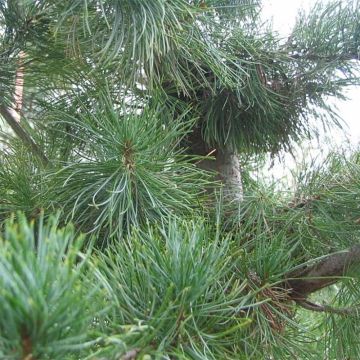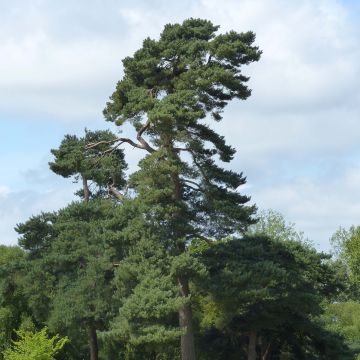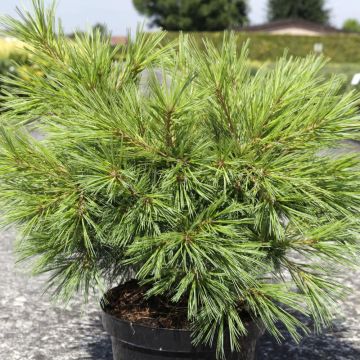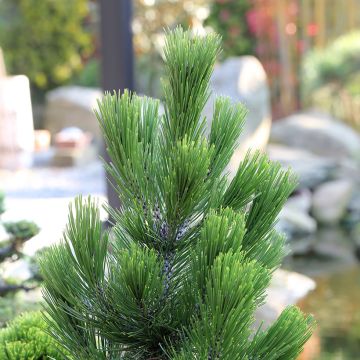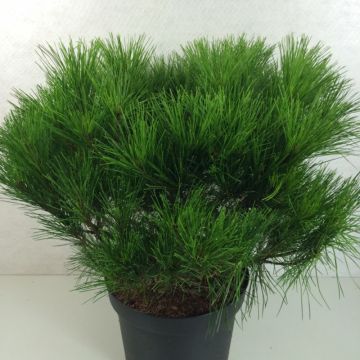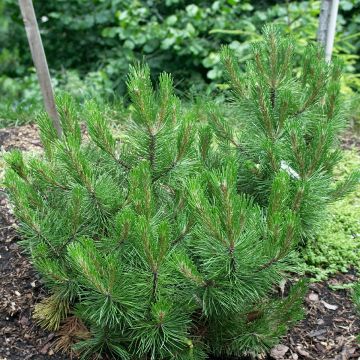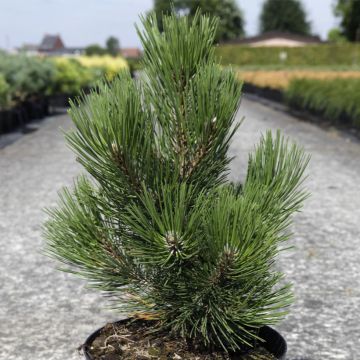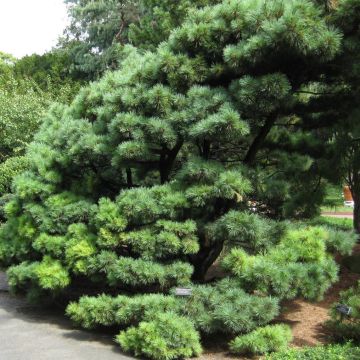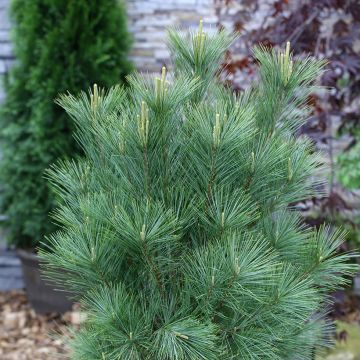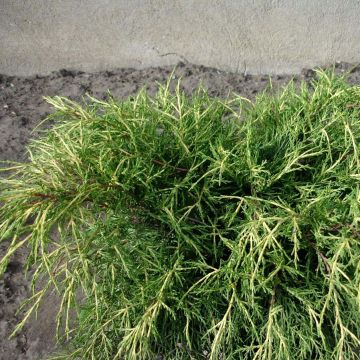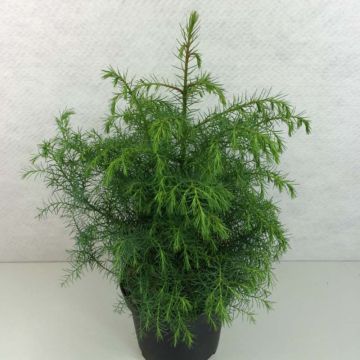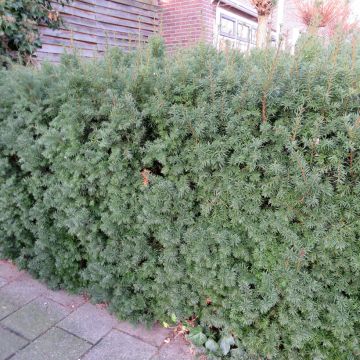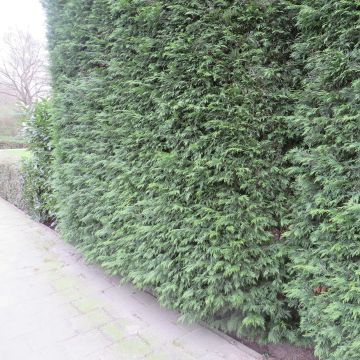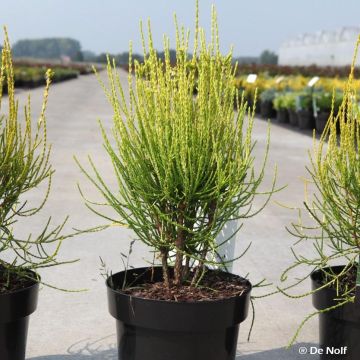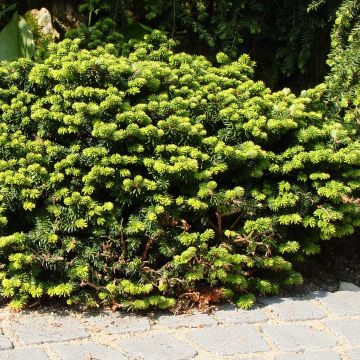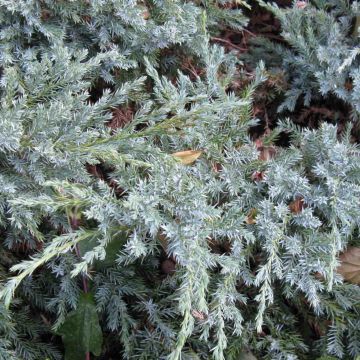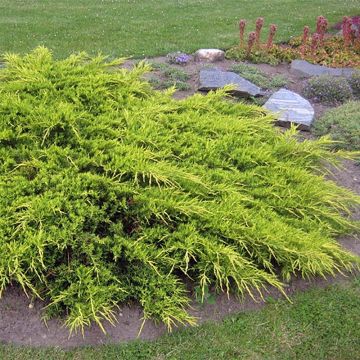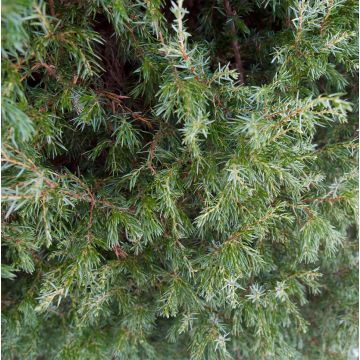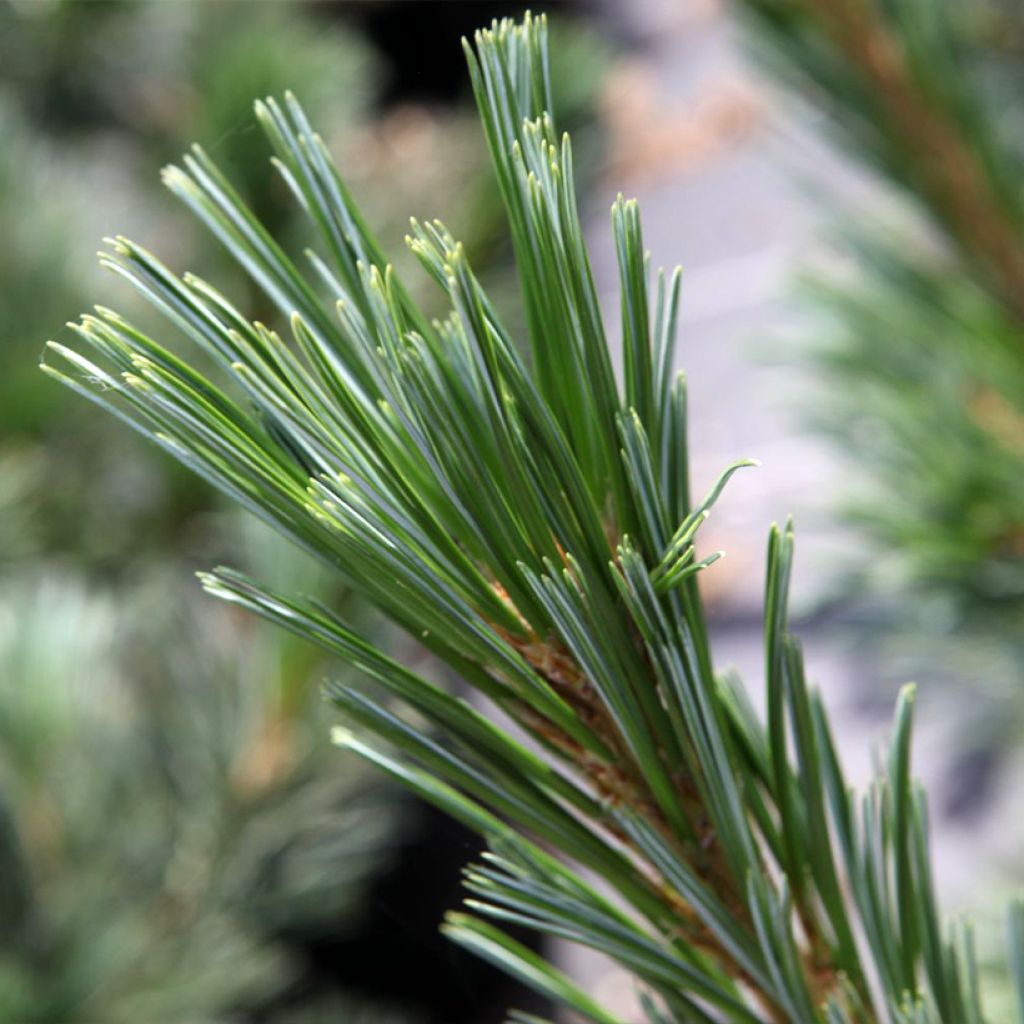

Pinus flexilis Vanderwolfs Pyramid -Felxible Pine
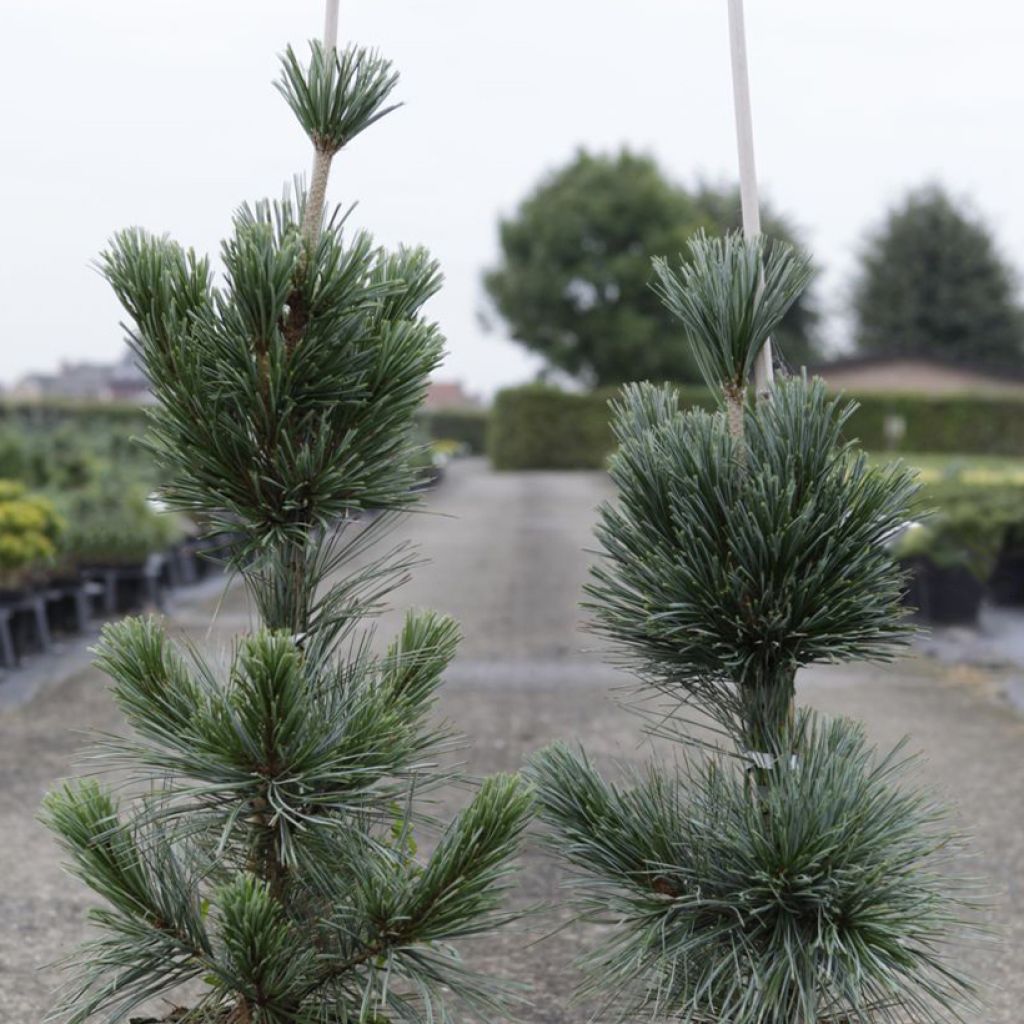

Pinus flexilis Vanderwolfs Pyramid -Felxible Pine
Pinus flexilis Vanderwolfs Pyramid -Felxible Pine
Pinus flexilis Vanderwolfs Pyramid
Flexible Pine
This item cannot be shipped to the selected country
Delivery charge from €5.90
Delivery charge from €5.90
Delivery to Corse prohibited
More information
Schedule delivery date,
and select date in basket
This plant carries a 24 months recovery warranty
More information
We guarantee the quality of our plants for a full growing cycle, and will replace at our expense any plant that fails to recover under normal climatic and planting conditions.
From €5.90 for pickup delivery and €6.90 for home delivery
Express home delivery from €8.90.
From €5.90 for pickup delivery and €6.90 for home delivery
Express home delivery from €8.90.
Delivery to Corse prohibited: UE law prohibits the import of this plant from mainland France to Corse as part of the fight against Xylella fastidiosa. Please accept our sincere apologies.
More information
Does this plant fit my garden?
Set up your Plantfit profile →
Description
The Pinus flexilis Vanderwolf's Pyramid is a compact form of a robust pine tree native to the Rocky Mountains, also known as the Western pine or flexible pine. It slowly forms a dense and well-shaped pyramid, with its candle-like vegetation covered in shiny green-blue needles with silver reflections. This conifer, with its moderate size, is perfectly suited for small garden decoration.
The Pinus flexilis belongs to the pinaceae family, and is native to the Rocky Mountains, from Canada to New Mexico, where it grows between 1500 and 3500 meters (4921 feet 4 inches and 11482 feet 11 inches) above sea level. It is a very hardy species that easily adapts to different climates and soils, adjusting its growth to the conditions it encounters. It is mainly characterized by the flexibility of its branches and its needles grouped in fives.
The cultivar 'Vanderwolf's Pyramid' distinguishes itself by its smaller size, denser and more regular vegetation, and even slower growth. After many years, this pine tree reaches a height of 6 meters (19 feet 8 inches) with a spread of 3 meters (9 feet 10 inches). Its crown is conical to pyramidal, supported by spreading and flexible branches that stand upright at their tips. Its needles are densely arranged at the ends of branches. Measuring 3 to 7.5 cm (1.2 to 3 in) long, they are rigid, shiny, pointed, and have a slightly bluish-green colour with silver reflections. The fruiting cones are 7 to 13 cm (2.8 to 5.1 in) long and 5 to 7 cm (2 to 2.8 in) wide. They are usually upright and become pendulous and shiny light brown when ripe.
The Vanderwolf's Pyramid Rocky Mountain Pine will find its place in a small or medium-sized garden, as a standalone specimen, in a large rock garden, as a hedge, planted in groups of three near an entrance, or on the edge of a woodland. It can also be placed against a grove or used as an elegant evergreen backdrop to highlight flower blooms or lighter foliage of other dwarf conifers or flowering shrubs. It pairs well with large stones, geometric lines of pools or buildings, and masonry works. It can be combined with complementary grasses or prostrate (Juniperus horizontalis Blue Chip) or globose (Picea abies Little Gem) conifers. The key is to play with volumes and colours.
Report an error about the product description
Pinus flexilis Vanderwolfs Pyramid -Felxible Pine in pictures
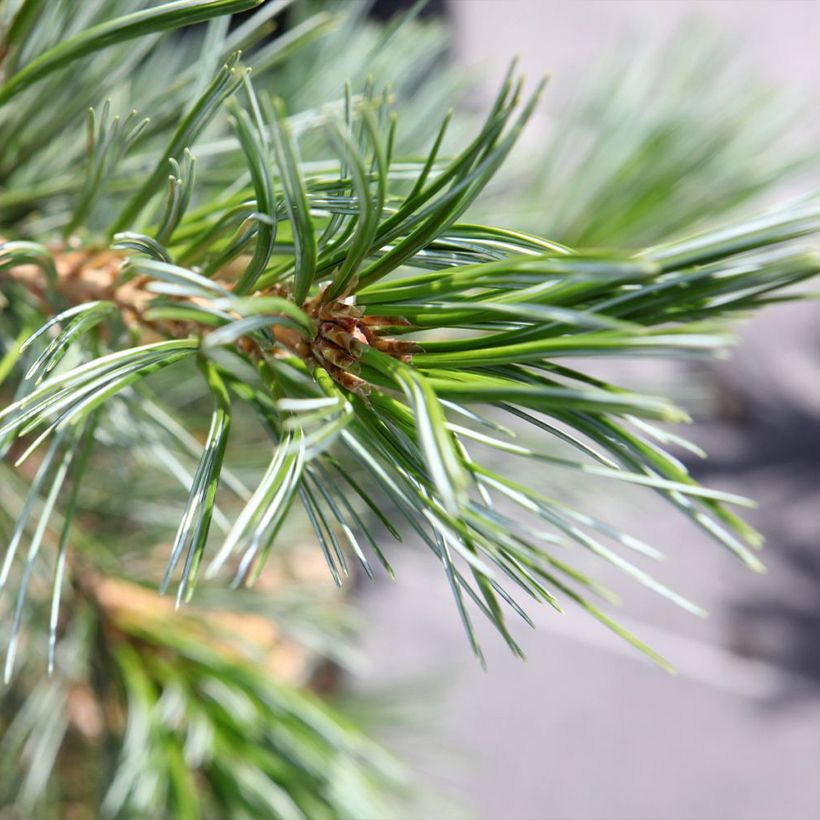

Plant habit
Foliage
Botanical data
Pinus
flexilis
Vanderwolfs Pyramid
Pinaceae
Flexible Pine
Rocky Mountains
Other Pinus - Pine
Planting and care
The Vanderwolf's Pyramid Western Pine can be planted from September to November and from February to June in any type of soil, but preferably well-drained, even limestone, and preferably moist. Once well-established, it can tolerate some summer drought if planted in deep soil. It only fears heavy and waterlogged soils however, it requires a sunny exposure to develop well. Soak the root balls well before planting. Optionally, add organic amendment at planting and water generously in the first few years, and during prolonged drought. You can apply a special conifer fertilizer every year in April and cultivate the soil in summer. This very hardy conifer (down to at least -20°C (-4 °F)) does not need pruning.
Planting period
Intended location
Care
This item has not been reviewed yet - be the first to leave a review about it.
Conifers
Haven't found what you were looking for?
Hardiness is the lowest winter temperature a plant can endure without suffering serious damage or even dying. However, hardiness is affected by location (a sheltered area, such as a patio), protection (winter cover) and soil type (hardiness is improved by well-drained soil).

Photo Sharing Terms & Conditions
In order to encourage gardeners to interact and share their experiences, Promesse de fleurs offers various media enabling content to be uploaded onto its Site - in particular via the ‘Photo sharing’ module.
The User agrees to refrain from:
- Posting any content that is illegal, prejudicial, insulting, racist, inciteful to hatred, revisionist, contrary to public decency, that infringes on privacy or on the privacy rights of third parties, in particular the publicity rights of persons and goods, intellectual property rights, or the right to privacy.
- Submitting content on behalf of a third party;
- Impersonate the identity of a third party and/or publish any personal information about a third party;
In general, the User undertakes to refrain from any unethical behaviour.
All Content (in particular text, comments, files, images, photos, videos, creative works, etc.), which may be subject to property or intellectual property rights, image or other private rights, shall remain the property of the User, subject to the limited rights granted by the terms of the licence granted by Promesse de fleurs as stated below. Users are at liberty to publish or not to publish such Content on the Site, notably via the ‘Photo Sharing’ facility, and accept that this Content shall be made public and freely accessible, notably on the Internet.
Users further acknowledge, undertake to have ,and guarantee that they hold all necessary rights and permissions to publish such material on the Site, in particular with regard to the legislation in force pertaining to any privacy, property, intellectual property, image, or contractual rights, or rights of any other nature. By publishing such Content on the Site, Users acknowledge accepting full liability as publishers of the Content within the meaning of the law, and grant Promesse de fleurs, free of charge, an inclusive, worldwide licence for the said Content for the entire duration of its publication, including all reproduction, representation, up/downloading, displaying, performing, transmission, and storage rights.
Users also grant permission for their name to be linked to the Content and accept that this link may not always be made available.
By engaging in posting material, Users consent to their Content becoming automatically accessible on the Internet, in particular on other sites and/or blogs and/or web pages of the Promesse de fleurs site, including in particular social pages and the Promesse de fleurs catalogue.
Users may secure the removal of entrusted content free of charge by issuing a simple request via our contact form.
The flowering period indicated on our website applies to countries and regions located in USDA zone 8 (France, the United Kingdom, Ireland, the Netherlands, etc.)
It will vary according to where you live:
- In zones 9 to 10 (Italy, Spain, Greece, etc.), flowering will occur about 2 to 4 weeks earlier.
- In zones 6 to 7 (Germany, Poland, Slovenia, and lower mountainous regions), flowering will be delayed by 2 to 3 weeks.
- In zone 5 (Central Europe, Scandinavia), blooming will be delayed by 3 to 5 weeks.
In temperate climates, pruning of spring-flowering shrubs (forsythia, spireas, etc.) should be done just after flowering.
Pruning of summer-flowering shrubs (Indian Lilac, Perovskia, etc.) can be done in winter or spring.
In cold regions as well as with frost-sensitive plants, avoid pruning too early when severe frosts may still occur.
The planting period indicated on our website applies to countries and regions located in USDA zone 8 (France, United Kingdom, Ireland, Netherlands).
It will vary according to where you live:
- In Mediterranean zones (Marseille, Madrid, Milan, etc.), autumn and winter are the best planting periods.
- In continental zones (Strasbourg, Munich, Vienna, etc.), delay planting by 2 to 3 weeks in spring and bring it forward by 2 to 4 weeks in autumn.
- In mountainous regions (the Alps, Pyrenees, Carpathians, etc.), it is best to plant in late spring (May-June) or late summer (August-September).
The harvesting period indicated on our website applies to countries and regions in USDA zone 8 (France, England, Ireland, the Netherlands).
In colder areas (Scandinavia, Poland, Austria...) fruit and vegetable harvests are likely to be delayed by 3-4 weeks.
In warmer areas (Italy, Spain, Greece, etc.), harvesting will probably take place earlier, depending on weather conditions.
The sowing periods indicated on our website apply to countries and regions within USDA Zone 8 (France, UK, Ireland, Netherlands).
In colder areas (Scandinavia, Poland, Austria...), delay any outdoor sowing by 3-4 weeks, or sow under glass.
In warmer climes (Italy, Spain, Greece, etc.), bring outdoor sowing forward by a few weeks.


































